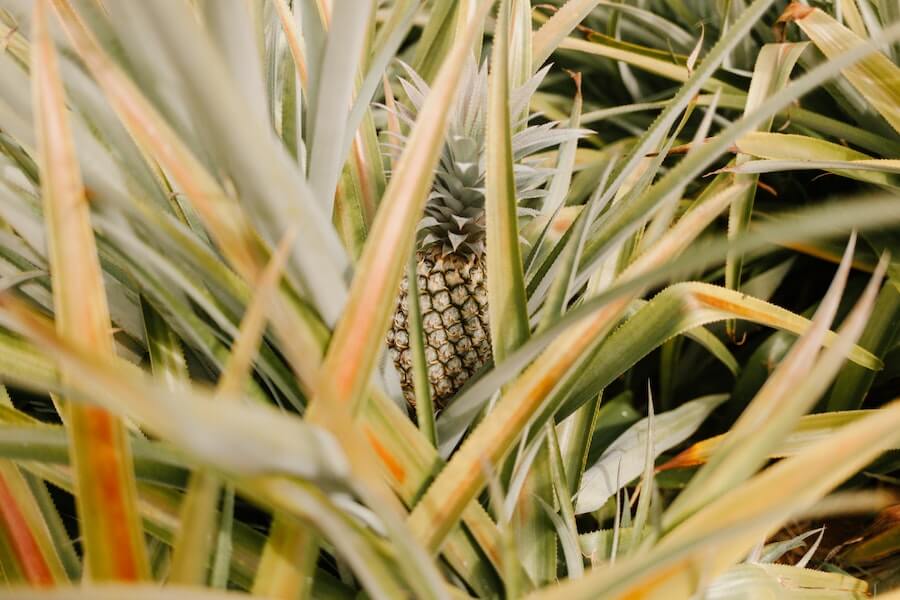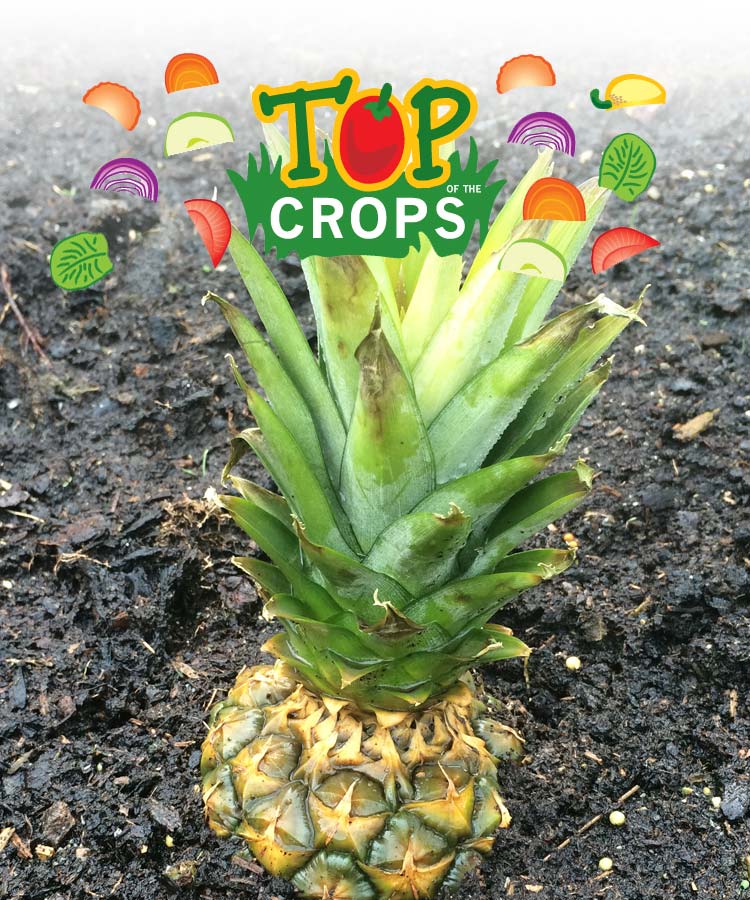While many of us associate pineapples with tropical climates, Polynesian breezes and softly swaying palms, it is possible to grow them here in the UK. Yes – you heard that right! Savvy gardeners harnessing the power of the polytunnel can grow thriving, healthy and (most importantly) delicious pineapples right here in our less than tropical climate.
While it does require a commitment of time and space, growing pineapples in a polytunnel does not have to be a complicated or intimidating task. By following our simple guide, you will be tucking into the flavours of the tropics within a few years time. Imagine impressing your friends and neighbours with pineapples from your own garden! Pina coladas, here you come.
Here’s how to look after a pineapple plant in your polytunnel for thriving pineapples in a couple of years.
Many people mistakenly believe that pineapples grow on trees. This is understandable, as tropical fruits such as coconuts, bananas and dates certainly do. However, pineapples come from a stocky, hearty plant that grows along the ground. Their leaves whorl out from a thick, central stem, and the long (and sometimes very sharp) leaves can grow to more than 1.5 metres in length.
Pineapples are native to Latin America, with around 84% of our the world market’s pineapples grown in Costa Rica. However, pineapples also grow in South Africa.
If you tried to sow pineapple seeds or seedlings in your back garden, the results would likely be laughable. Even if the seed did sprout, over time the inclement British weather would certainly kill your baby plant. It simply isn’t possible without specialised supplies.
What are they? Well, other than your seeds, the most important material you need in order to grow this luscious fruit in the UK is a polytunnel. A polytunnel is almost like a miniature greenhouse that anyone can install in their garden. It consists of an elongated wire frame wrapped with polythene, and it allows you to grow warm weather plants and flowers than would normally die in cooler British weather.
The polytunnel gives you a lot more options than planting in your garden in the traditional way. If we have an unexpected cold snap in the UK, your polytunnel, cloche or insulated fleece will protect your seedlings and prevent them from dying. Polytunnels are available for even the smallest gardens, but for pineapples you do need quite a bit of space.
By increasing the heat and humidity under the frame, a polytunnel mimics the weather conditions of the tropics, helping gardeners learn how to look after a pineapple plant that will thrive.
With a polytunnel, you can plant your pineapples in spring and begin to harvest them approximately three years later. Admittedly, this is not a quick process! But the novelty factor keeps British gardeners sowing pineapples year after year.
Ready to invest some time, love and effort into growing these tropical delicacies? Read ahead to find out how to look after a pineapple plant.

Learning how to look after a pineapple plant is a surprisingly simple process. Of course, you will have to regularly check up on and maintain you pineapple plant, but the healthy climate that a polytunnel can provide will help ensure thriving pineapples. Here’s how to look after a pineapple plant in your polytunnel in a few easy steps, including how to plant pineapples and how to know if a pineapple is ripe.
The most common way to grow pineapples is to plant the tops of the fruits. After eating a pineapple, you can save the leafy top and pop it into the soil, where it will take root. Do remember that each pineapple plant fruits just once every three years (or even longer), and they yield only one fruit per plant. Don’t plan on a massive harvest!
Here is a brief guide to planting pineapples in your garden:
Now you know how to look after a pineapple plant for the few years of its growth, you need to understand how to know if a pineapple is ripe! There are several ways for you to check if your pineapple is ripe, and these are:
Once you’ve determined if your pineapple is ripe, you’ll need to know how to pick it. Remember, pineapples will take between 2 to 4 years to flower, and from there they still need to fruit. In general, a pineapple will flower as soon as it reaches a big enough size. So, the happier your plants are and the warmer you keep them, the sooner your pineapple will flower and fruit. If you grow your pineapples in a polytunnel, you will find that you have a lot more success, and you will be making smoothies, fruit salad and savoury dishes a lot faster.
To pick a pineapple, simply snip it off at the base using sturdy garden shears. Don’t forget to save the tops in order to start the whole process over again!
Learning how to look after a pineapple plant in a polytunnel is sure to produce some tasty fruits for you to enjoy. Plus, pineapples are an ancient symbol of good luck and welcome, and so what better way to treat your friends, family and neighbours than with a home-grown pineapple? Once they find out that this sweet treat was grown right here in the UK, in your very own garden? They are going to be even more impressed. Aloha!
